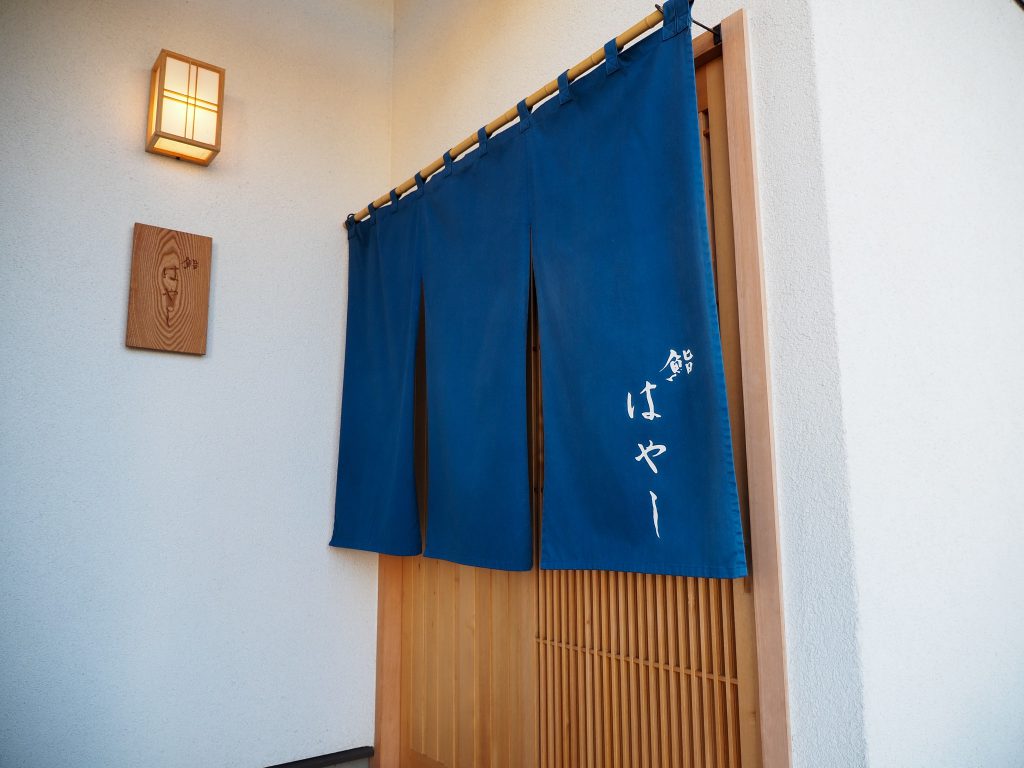A taste that heralds spring in Fukushima! The irresistibly firm texture of high-end icefish.
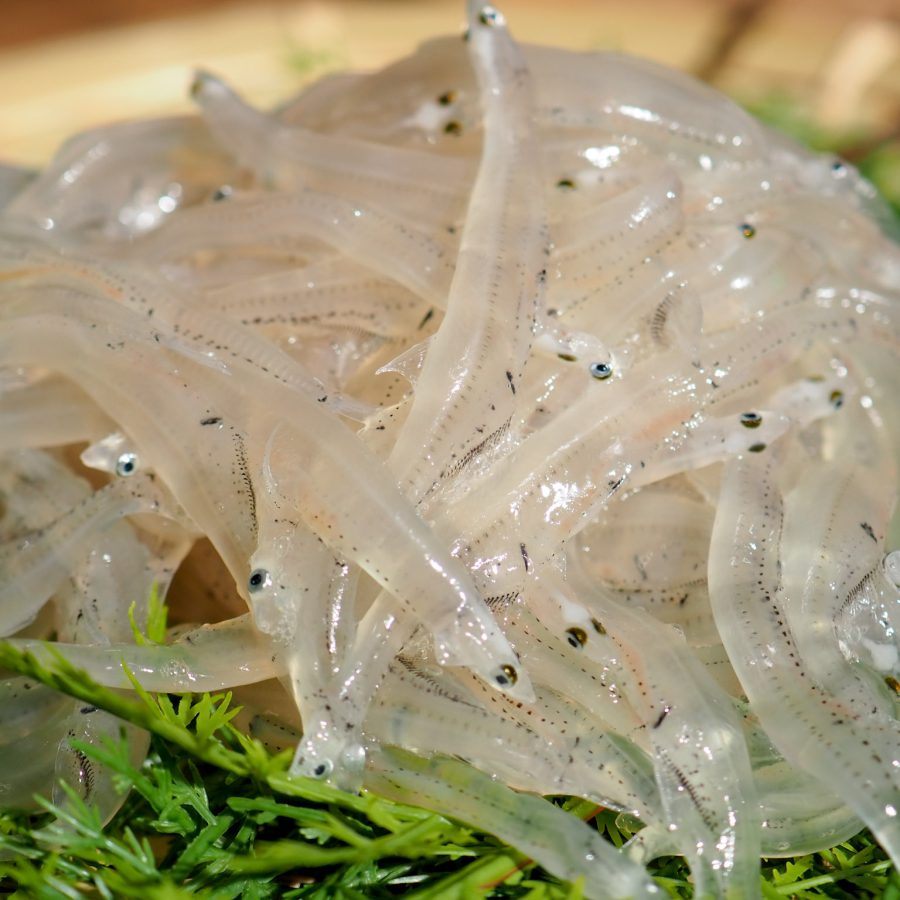
Among the Joban-mono seafood, icefish (Ishikawa icefish) is the quintessential spring delicacy. Locally, it is called the “harbinger of spring”, and it is believed that “when this fish is caught, it is a sign that spring is approaching”. The peak catch season is from early February to mid-April, and it is known nationwide as a high-end ingredient. However, in Fukushima, the fish is eaten commonly at home and is deeply rooted in the region.
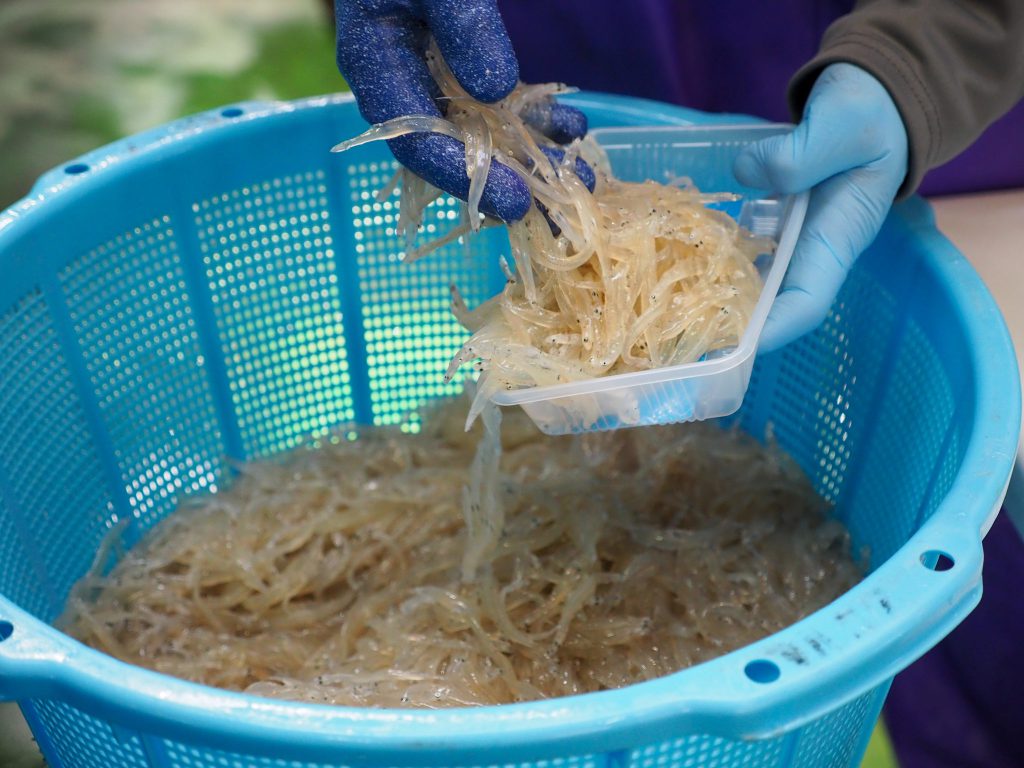
Due to its small, translucent appearance, icefish is sometimes mistaken for whitebait, but is in fact a completely different fish. Whitebait refers to juvenile anchovies and sardines. On the other hand, the icefish is a full-grown fish. Even at its largest it is only about 10 cm long and is often eaten as sashimi, tempura, karaage or in clear soup.
At “Sushi Hayashi” in Soma City, you can enjoy a variety of icefish dishes that capitalize on the freshness of the locally caught fish. We asked the owner, Masahiro Hayashi, about the appeal of Joban-mono icefish.
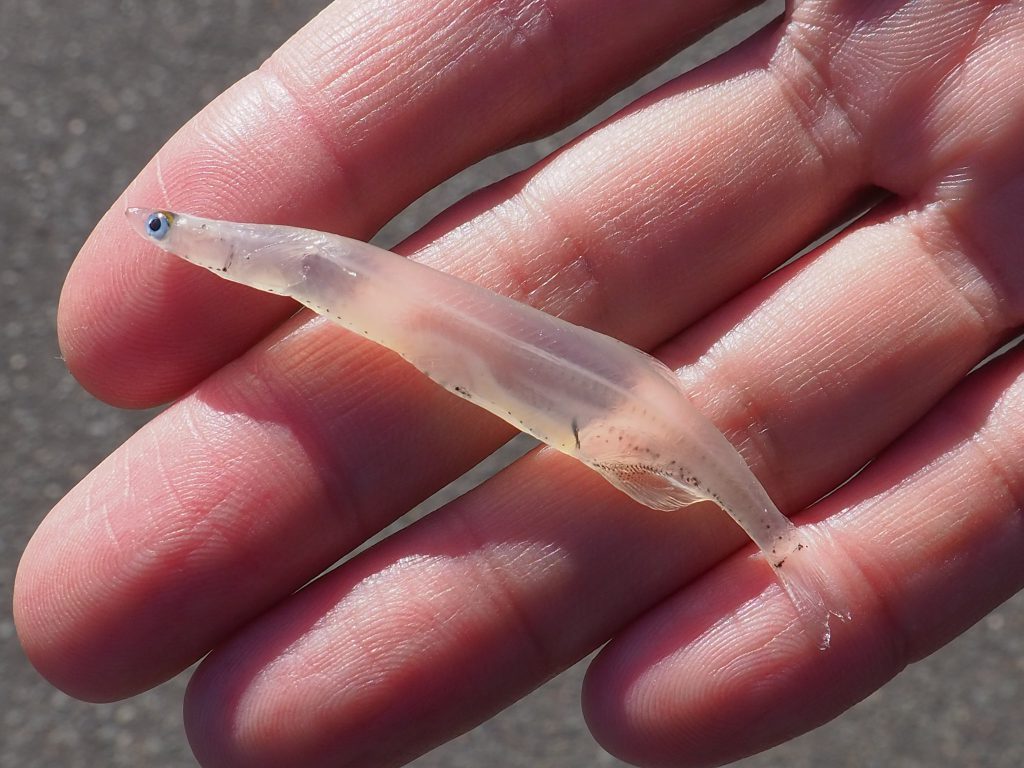
Joban-mono icefish has a rich flavor, with strong sweetness and aroma.
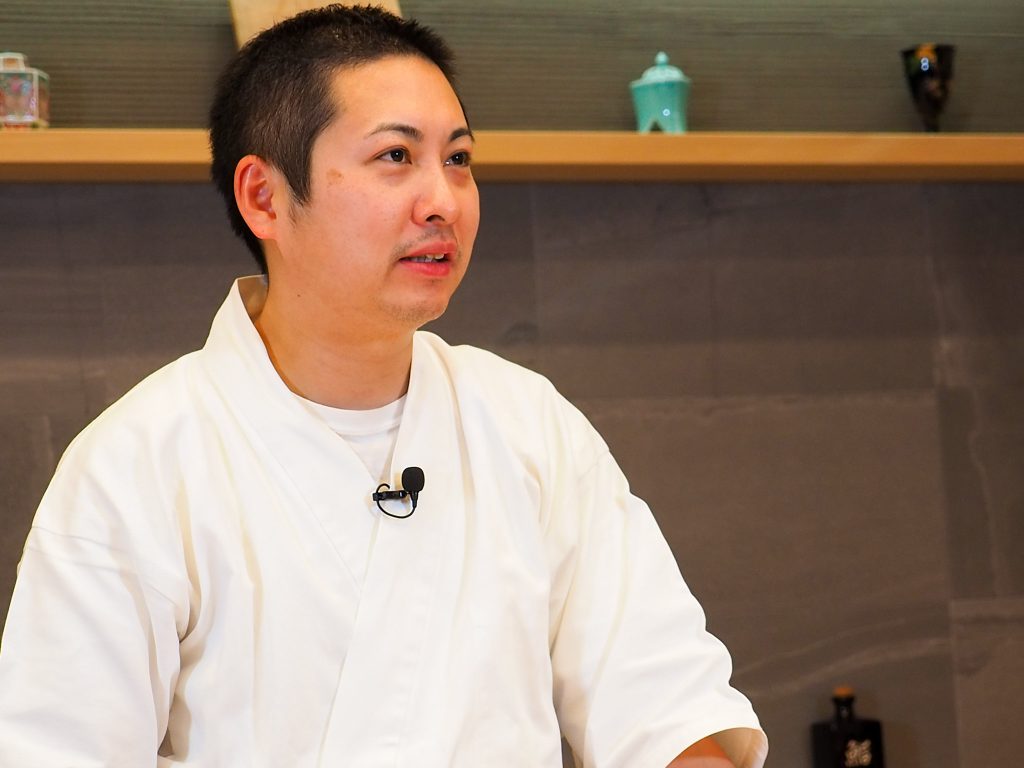
According to Hayashi-san, Joban-mono icefish is “characterized by its rich flavor, strong sweetness, and pronounced aroma”. When fresh, the sashimi has a firm texture and is said to have an “elegant, slightly bitter flavor that appeals to mature palates”. When cooked, the bitterness is subdued and the sweetness is enhanced, making it easy for children to enjoy as well.
At Sushi Hayashi, they source carefully selected seasonal ingredients from across the country. However, when sourcing ingredients, they prioritize “local seafood whenever it is available”. Many customers come from as far away as Tokyo, and he says, “Visitors from far away usually want to try the local seafood whenever possible”.
The appeal of Joban-mono seafood lies in the variety of fish species available. There are around 200 species of fish and shellfish that are caught and branded as Joban-mono, and there are delicious fish to be caught in every season. In spring, Hayashi-san says, “I want people to eat icefish and feel the season”.
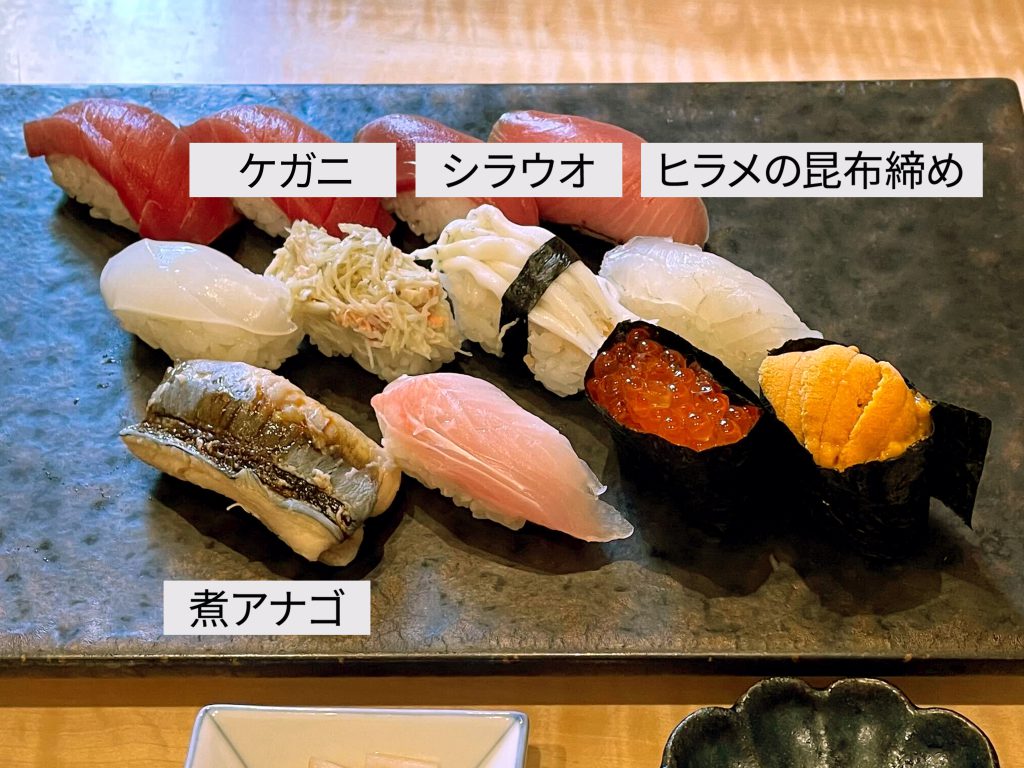
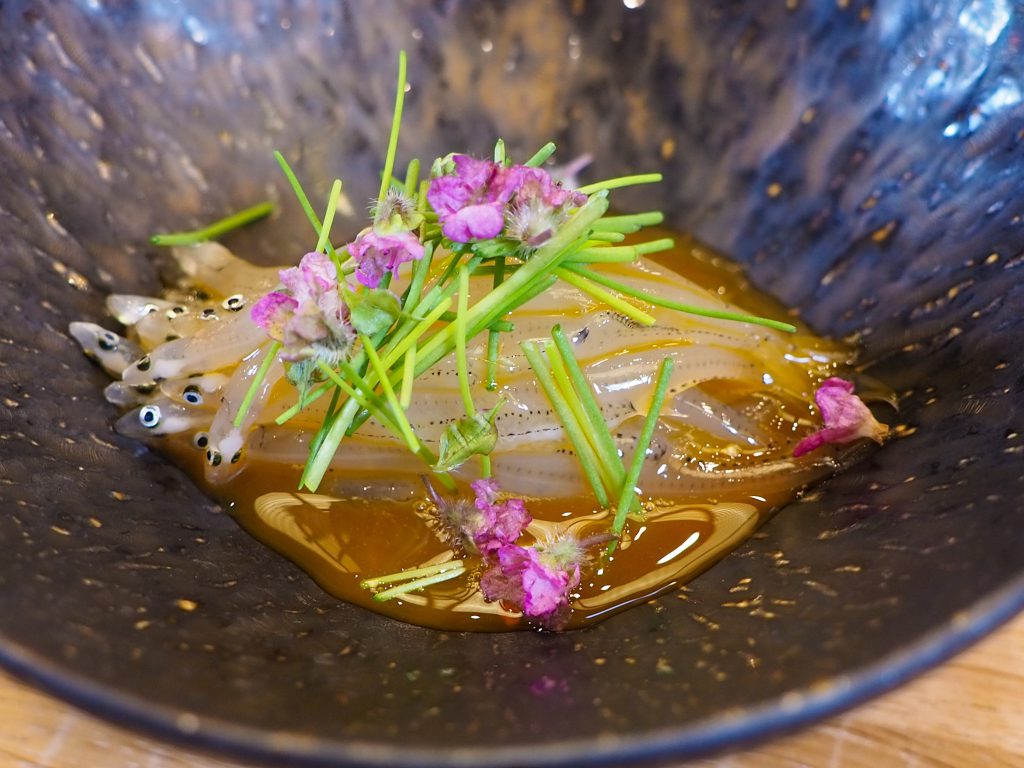
In the spring season when icefish is at its peak, Sushi Hayashi offers a variety of dishes featuring this delicacy. Among them, the dish that best showcases the freshness of icefish is sashimi served with yolk-added soy sauce. When you bite into it, the crunchy texture and slight bitterness of the icefish blend with the yolk, creating a rich and complex aroma.
Deep-fried icefish is also popular. The use of high-temperature oil makes it crispy and non-greasy. It has a fluffy texture, and cooking brings out the sweetness of the icefish.
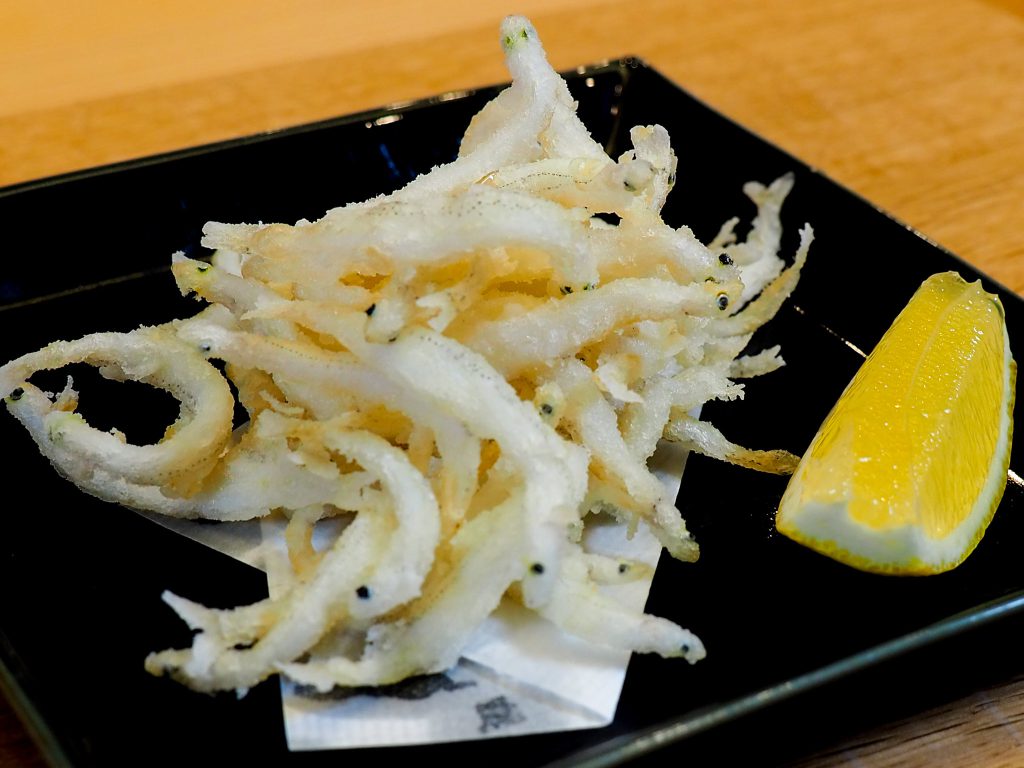
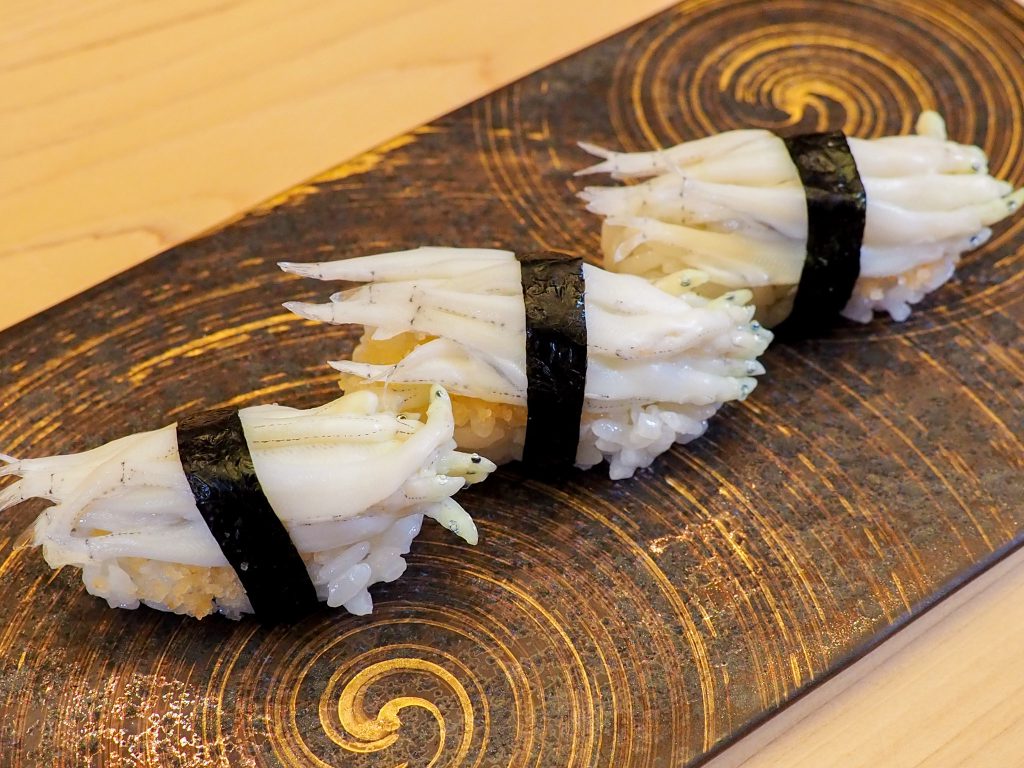
Nigiri rice balls allow you to savor the true essence of “Edo-style sushi” that Sushi Hayashi is renowned for. About ten icefish are used for each piece of nigiri, and they are steamed together with sake. The reason for putting them together before steaming is to make use of the property whereby the gelatinous substance melts when heat is applied. According to Hayashi-san, applying heat to icefish is a traditional technique that has been passed down through generations. He describes it as “an age-old Edo-style sushi technique”.
We want people to enjoy Joban-mono even more.
Sushi Hayashi opened in October 2020. Hayashi-san is the second generation of his family to run a sushi restaurant and trained in Tokyo to take over his father’s business. With the desire to create a unique restaurant not found locally, he changed the concept from his predecessor’s more casual approach.
He pursued the unique techniques of Edo-style sushi. Instead of simply slicing and serving raw fish, he values the other, extra steps like killing, searing, and simmering. And with his commitment to “using truly good fish”, the restaurant adopted the style of a high-end sushi establishment, which is rare in the local area. Hayashi-san says, “A sushi restaurant should be just tense enough to make you straighten your back”. He wanted to create a place where people could experience the special feeling of dining at a high-end restaurant in Ginza.
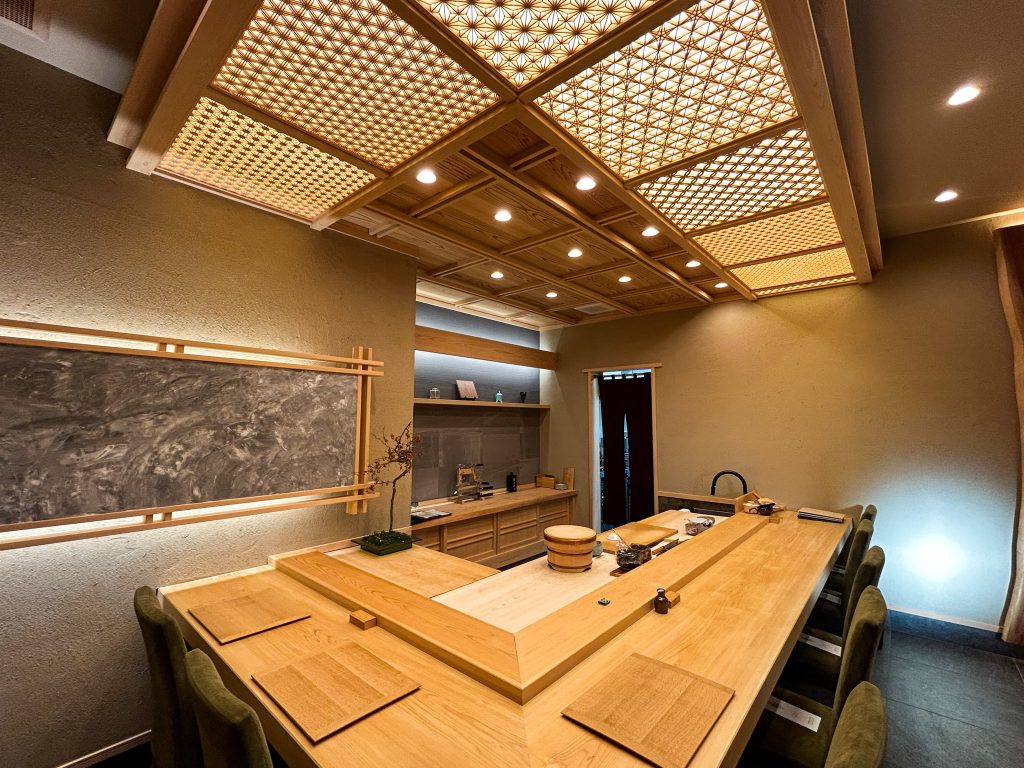
For locals, Joban-mono marine products such as icefish are not necessarily rare. Some people, such as those in the fishing industry, eat Joban-mono almost daily. That’s why, while gathering delicious fish from all over the country, we put a lot of effort into the preparation of Joban-mono in particular. They are constantly striving to ensure that their guests “can enjoy the fish that the locals eat regularly in an even more delicious way”.
The restaurant attracts customers not only from the local area but also from distant places. The combination of teachings from his predecessor, the craftsmanship honed during his training, his creativity, and the meticulously designed space create an irresistible allure that makes people want to visit. Why not experience the carefully crafted Edo-style sushi at Sushi Hayashi?
●Sushi Hayashi
Address:15 Tsukada, Nakamura, Soma City, Fukushima Prefecture
Tel:0244-26-3104
Hours: Lunch/11:30 AM to 2:00 PM (Last order at 1:30 PM)、
Dinner/5:00 PM to 10:00 PM (Last order at 9:30 PM)
*Dinner is by reservation only.
Closed:Mondays and the 2nd and 4th Tuesdays
